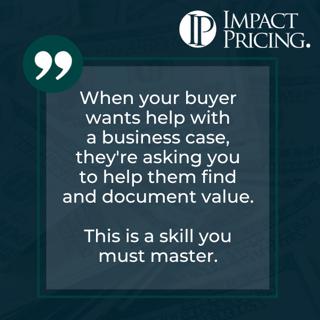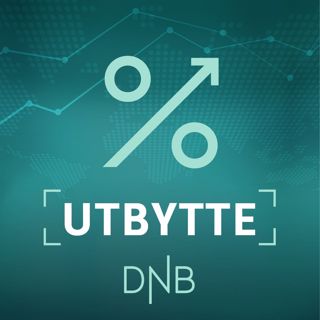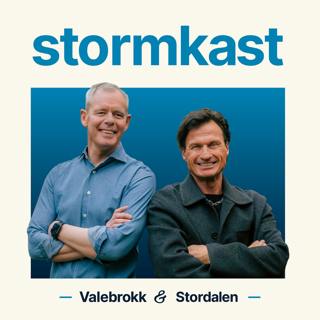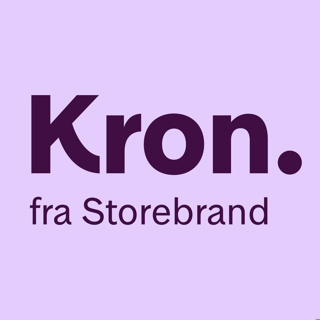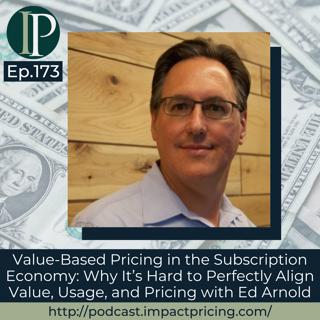
Value-Based Pricing in the Subscription Economy: Why It’s Hard to Perfectly Align Value, Usage, and Pricing with Ed Arnold
Ed Arnold works as an Advisor at Ibbaka, a software provider for high growth companies that helps optimize planning and execution of key growth initiatives while improving company performance. He was the VP of Products at LeveragePoint for 10 years, and was able to work with the pricing legend, Tom Nagle. In this episode, Ed talks about the future of value-based pricing in the subscription economy as he discusses how product-led growth companies achieve their initial growth which later on leads to big wins. Why you have to check out today’s podcast: Understand why pricing in value is the key in very clever segmentation in terms of creating user profiles in the market; Find out how product-led growth companies grow from being a small enterprise to being loved by a bigger market Discover companies that are product-led growth businesses and realize how much they’ve grown since day one “Understand how your customer gets value from using your product, not from buying it; not in terms of what the product offering is in terms of features, but how they actually use it.” – Ed Arnold Topics Covered: 01:03 – Who is Tom Nagle? 01:41 – How Ed got into pricing + creating a tool and working with Tom Nagle 03:07 – Explaining what LeveragePoint is 03:50 – Future of value-based pricing in subscription: Value as a differentiator in the market 07:11 – Buying vs. negotiating a price: Knowing what you’re after 11:43 – Product-led growth practice as a brilliant strategy for business 13:55 – What Ed and everybody else likes about PLG – instant gratification 17:43 – Life-changing benefits of Slack 19:15 – Aligning pricing metrics 21:34 – Why usage-based pricing frustrates Mark 23:41 – Changing and having more than one pricing metric 27:13 – Ed’s piece of pricing advice for the listeners 28:06 – What Ed thinks about behavioral economics Key Takeaways: “If you're thinking about what sort of animal you're hunting in the enterprise game, those are the whales. I think value is the only way you can differentiate yourself in the enterprise market.” – Ed Arnold “No corporate buyer ever heard of Slack until thousands of people in their company were already using it. So, in a sense, the business employee is a consumer, and that's how product-led growth companies are getting that initial growth. They're making it so ridiculously easy for people to start using it before the corporate procurement folks or even IT departments have any idea that they're using it. That's what makes that model so, so attractive for investors.” – Ed Arnold “We like to talk about three types of metrics. And you got to link those three together. Ideally, if you can link those three together, you're in Nirvana, because your price is aligned with value and it's aligned with usage and everything is great.” – Ed Arnold “When it's the right thing to do, and it makes sense, it does pay dividends. But it's tough. And I think it's really a leap of faith and doing it.” – Ed Arnold People / Resources Mentioned: Ibbaka: https://www.ibbaka.com/ The Strategy and Tactics of Pricing by Tom Nagle: https://www.amazon.com/gp/product/1138737518/ref=dbs_a_def_rwt_hsch_vapi_tpbk_p1_i0 Monitor: https://www2.deloitte.com/global/ LeveragePoint: https://www.leveragepoint.com/ Salesforce: https://www.salesforce.com/ Slack: https://www.slack.com/ Calendly: https://calendly.com/ Zoom: https://www.zoom.us/ Connect with Ed Arnold: Email: arnold@ibbaka.com LinkedIn: https://www.linkedin.com/in/edarnold1/ Connect with Mark Stiving: LinkedIn: https://www.linkedin.com/in/stiving/ Email: mark@impactpricing.com
16 Mai 202231min

Blogcast #54: Shrinkflation, the Hidden Price Increase
This is an Impact Pricing Blog published on March 30, 2022, turned into an audio podcast so you can listen on the go. Read Full Article Here: https://impactpricing.com/blog/shrinkflation-the-hidden-price-increase/ If you have any feedback, definitely send it. You can reach us at mark@impactpricing.com. Now, go make an impact. Connect with Mark Stiving: Email: mark@impactpricing.com LinkedIn: https://www.linkedin.com/in/stiving/
13 Mai 20223min
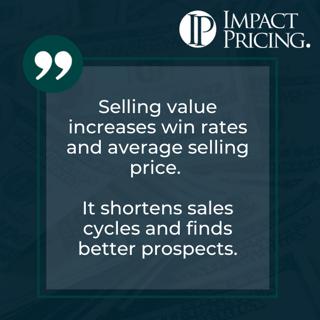
Memecast #57: Selling Value Helps Alot
Boy, there's no way I can completely explain this impactful insight in a brief conversation. But understand, if we can get our salespeople to shift from talking about our features and pushing our products to instead selling the value of our products to our marketplace, our salespeople learn to talk about the problems that we're going to solve, the results that our buyers are going to expect to achieve, this does magic in terms of the sales cycle and the end of the sale. Because when we truly resonate with our buyers and their problems and hoped for results, we're going to win more deals. We're probably going to win more deals even at higher prices, which is the key point. And if buyers are truly comfortable, they'll make decisions faster, shortening our sales cycle, and once we learn to think this way, we can look for buyers who have those problems. Selling value seems to be this magic elixir to driving up ASP's, revenue, and profit. We hope you enjoyed this memecast. This impactful insight came from the book, Selling Value, which I wrote to help salespeople win more deals at higher prices. If you have any questions or feedback, please email me mark@impactpricing.com. Now go make an impact. Connect with Mark Stiving: Email: mark@impactpricing.com LinkedIn: https://www.linkedin.com/in/stiving/
11 Mai 20221min
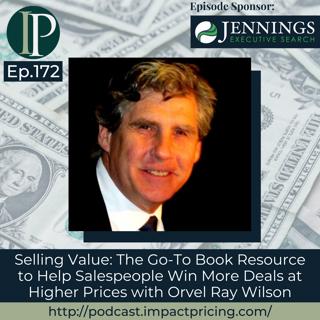
Selling Value: The Go-To Book Resource to Help Salespeople Win More Deals at Higher Prices with Orvel Ray Wilson
Orvel Ray Wilson is co-author of the book, “Guerilla Selling”, and five other books in the “Guerilla Marketing” series, the best-selling marketing series in history. He is a Certified Speaking Professional, a coach to those who want to build their practice as an author, a speaker, and a thought leader. Through The Guerilla Group, he helps professionals build and grow their business by focusing on writing, stagecraft, and marketing. Orvel Ray is Mark Stiving’s personal business coach. In this episode, Mark and Orvel Ray talk about the former’s newly released book, Selling Value, as they both share stories in all ways connected to his account. Why you have to check out today’s podcast: Learn about the importance of translating what matters to your customer into something of real value, like measurable dollars Discover what the book, Selling Value, is trying to show salespeople Find out how the Guerilla series was able to move a lot of people, including product managers, product marketing, and other VAs “If you're closing more than about 70% of your opportunities, you're not charging enough.” – Orvel Ray Wilson Topics Covered: 01:55 – The story of how Mark and Orvel Ray met 02:40 – Working with Mark for his book, Selling Value: Taking note of what’s important to your customers 06:19 – What the book is showing salespeople how to do + how the ‘Will I? In which one?’ concept came to exist 10:03 – Orvel Ray’s friend, Jordan, who was able to close an $85,000 deal as he learns from Mark’s book 14:59 – Why should salespeople and pricing people care about selling value? 18:14 – Send Orvel Ray a message and get one free hour of free consultation on how to become a speaker and/or an author. 19:20 – Orvel Ray’s piece of pricing advice 21:43 – What anchoring is all about Key Takeaways: “Salespeople need to understand how this really works, not only to convey and do the math and show them that this is a good investment, but to do that in terms that are important to them.” – Orvel Ray Wilson “I might have 100 good reasons why you should buy my product, but your decision is going to hinge on the three or four reasons that you think are important. And if you can isolate what those are and sell to those, then two things happen – one, the sales process is a lot simpler, and your offering is going to be irresistible.” – Orvel Ray Wilson, Guerilla Selling “Many times, we fail, we lose the sale, not because our product isn't a good fit, or because we don't have superior technology, or aggressive pricing, but simply because we haven't got the customer to make the ‘will I?’ decision in the first place.” – Orvel Ray Wilson “Just putting this technology in the hands of your sales team is going to make an immediate and measurable impact, as I've already said, and certainly more so than any other sales book I've read recently; and I've read them all.” – Orvel Ray Wilson “Build value, include everything, load up the table like it's Thanksgiving dinner, and then if you have to talk about reducing your fees, you can take things off the table and still defend your value.” – Orvel Ray Wilson People / Resources Mentioned: Selling Value: https://www.amazon.com/Selling-Value-Deals-Higher-Prices/dp/1737655217/ Houghton Mifflin:https://www.hmhco.com/ Guerilla Selling: https://www.amazon.com/Guerrilla-Selling-Unconventional-Weapons-Increasing/dp/0395578205/ Impact Pricing: https://www.amazon.com/Impact-Pricing-Blueprint-Driving-Profits/dp/1483489701/ Patricia Fripp: https://www.youtube.com/user/PatriciaFripp Connect with Orvel Ray Wilson: LinkedIn: https://www.linkedin.com/in/orvelray/ Email: orvelray@guerillagroup.com Website: https://guerrillagroup.com/ Connect with Mark Stiving: LinkedIn: https://www.linkedin.com/in/stiving/ Email: mark@impactpricing.com
9 Mai 202224min
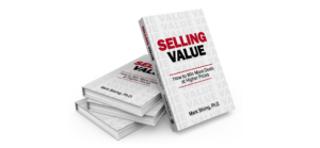
Blogcast #53: Selling Value
This is an Impact Pricing Blog published on April 20, 2022, turned into an audio podcast so you can listen on the go. Read Full Article Here: https://impactpricing.com/blog/selling-value/ If you have any feedback, definitely send it. You can reach us at mark@impactpricing.com. Now, go make an impact. Connect with Mark Stiving: Email: mark@impactpricing.com LinkedIn: https://www.linkedin.com/in/stiving/
6 Mai 20222min
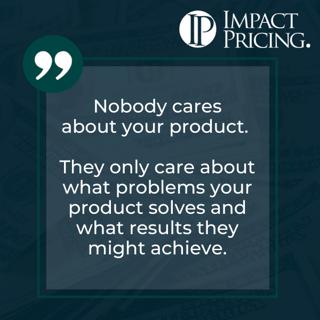
Memecast #56: Nobody Cares About Your Product
It's absolutely true, people don't buy products, they buy solutions to problems. When we talk about our products, when we talk about our features, that doesn't truly resonate in the minds of our buyers. Instead, what we need to be doing is talking about the problems that we're going to solve as well as the results a buyer might achieve. When we can capture their attention, recognizing the fact that they have a problem and getting them to agree that they have that problem, and then describing the results they might be able to achieve by solving that problem, now we're getting their attention. These are things they can truly value. And by the way, maybe we're solving more problems than they originally thought they were when they were looking for a product like ours. When we truly understand problems and results for our marketplace, and we can talk to our customers that way, our customers then perceive a lot more value, which means we can win these deals at higher prices. And that's really the whole point. We hope you enjoyed this memecast. This impactful insight came from the book, Selling Value, which I wrote to help salespeople win more deals at higher prices. If you have any questions or feedback, please email me mark@impactpricing.com. Now go make an impact. Connect with Mark Stiving: Email: mark@impactpricing.com LinkedIn: https://www.linkedin.com/in/stiving/
4 Mai 20221min
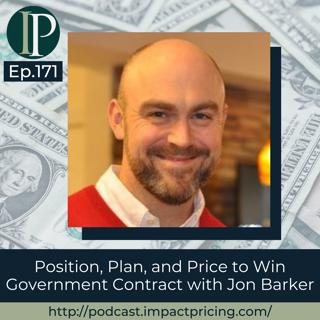
Position, Plan, and Price to Win Government Contract with Jon Barker
Jon Barker has been involved in managing government contracts from the supplier side his entire career. He started a company called PTW Solutions, where PTW means Price To Win, and they help companies win government contracts. Jon is an avid coach and he's coached both lacrosse and soccer. When coaching, Jon fosters a team environment, while learning the strengths and weaknesses of each individual to build up skills and confidence. In this episode, Jon talks about government contracting as he puts emphasis on why the government’s focus is set on cost-plus. Why you have to check out today’s podcast: Learn how pricing runs in government contracting Discover what a “probability of win” means and why you should focus on deals with higher “probability of win” Find out resources you can visit as you look for data of your competitors’ prices “Create your own internal models of the data that you use a lot to make those decisions, and have the ability to make the levers change easily. I think as a government contracting pricer, it would be extremely beneficial.” – Jon Barker Topics Covered: 01:36 – The start of Jon’s pricing journey for government contractors 04:39 – Small businesses having more volatility with government contracting if compared to large companies 08:10 – What’s a P-win + what Jon loves about the field he’s in 09:23 – Best value tradeoffs; putting energy into writing proposals for deals of higher p wins 14:23 – Position, Plan, and Price to Win; Government contracting as an interesting field 17:37 – Go-to’s of a data guy: GSA price list, GSA Calc, STARS III, SAM, USA Spending 22:25 – Jon’s passion for government contracting 24:44 – Jon’s piece of pricing advice for today’s listeners Key Takeaways: “Here's the beauty of it. When you're talking with larger companies, those rates are set. When you're talking to smaller companies, they have a lot more flexibility. They're not on the radars of these agencies… The smaller you are, the more of an art it is to be able to be clever with the numbers and figure out where you can ship those costs.” – Jon Barker “As you add layers and layers of contracts that you win, you have more capabilities. The biggest thing about winning contracts is being able to successfully execute them.” – Jon Barker “Section M (evaluation criteria) is probably your most important section in terms of how to create a winning bid and how to tailor your technical and your pricing strategies in order to maximize that probability of win.” – Jon Barker “The government customers’ so huge, and there's so many different facets to it. There's plenty of other work to be had there. Don't get focused on, again, losing efforts to where the evaluators are not going to find the value in your offering, because you're not set up to be successful for that.” – Jon Barker “Pricing is just a fascinating topic; it’s very psychological, as you know. But in government procurement, it's very much cost-plus based, because the government expects to understand how companies came up with the rates that they bid.” – Jon Barker People / Resources Mentioned: PTW Solutions Inc.: https://price-to-win.com/ CPARS: https://www.cpars.gov/ GSA Calc: https://calc.gsa.gov/ STARS III: https://www.gsa.gov/technology/technology-purchasing-programs/governmentwide-acquisition-contracts/8a-stars-iii SAM: https://sam.gov/ USA Spending: https://www.usaspending.gov/ Federal Acquisition Regulation: https://www.gsa.gov/policy-regulations/regulations/federal-acquisition-regulation-far Connect with Jon Barker: Email: jon@pricetowinsolutions.com LinkedIn:https://www.linkedin.com/in/jon-barker-4648b84/ Telephone: 571-216-9890 Website: https://price-to-win.com/ Connect with Mark Stiving: LinkedIn: https://www.linkedin.com/in/stiving/ Email: mark@impactpricing.com
2 Mai 202229min

Blogcast #52: Peleton Tests New Pricing Model
This is an Impact Pricing Blog published on March 23, 2022, turned into an audio podcast so you can listen on the go. Read Full Article Here: https://impactpricing.com/blog/peloton-tests-new-pricing-model/ If you have any feedback, definitely send it. You can reach us at mark@impactpricing.com. Now, go make an impact. Connect with Mark Stiving: Email: mark@impactpricing.com LinkedIn: https://www.linkedin.com/in/stiving/
29 Apr 20223min
